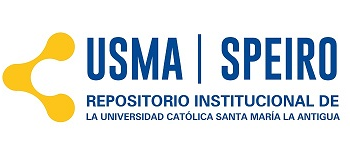Typologies of informality: Socio-structural factors that influence its presence in the Panamanian labor market
DOI:
https://doi.org/10.37387/ipc.v12i3.392Keywords:
informal employment, labor market, typologies, cluster analysis, dual economyAbstract
The Panamanian labor market experienced a steady increase in its rate of informal employment between 2018 and 2022. By 2023, 47.4% of employed individuals were working under informal conditions. If we understand this phenomenon as a reflection of market rigidities that lead to precariousness, it is essential to understand its characteristics in depth to formulate and implement effective public policies that improve the outcomes and potential of the labor market. In this study, we expand the definition and operationalization of the concept of informality to include all individuals who are not direct contributors to the Social Security Fund. This helps us explore, across all economic sectors, the individuals living in informality, the most relevant variables that distinguishes them, whether different types of informality exist, and the major differences between these groups. Using the 2019 and 2022 Multiple Purpose Survey by INEC, we develop typologies of people living in informality through cluster analysis. The analysis suggests that different types of informality exist, that there were no major changes in the composition of these groups as a result of the 2020-2021 pandemic, and that the roles people play in their households remain a determining variable for understanding these dynamics. In the final section, we provide some policy implications.
Downloads
References
Acevedo, I., Castellani, F., Lotti, G., & Székely, M. (2021). Informalidad en los tiempos del COVID-19 en América Latina: implicaciones y opciones de amortiguamiento (No. IDB-WP-01232). IDB Working Paper Series.
Alaniz, E., Gindling, T., Mata, C., & Rojas, D. (2021). Heterogeneous informality in Costa Rica and Nicaragua (No. 2021/50). WIDER Working Paper.
Acemoglu, D., & Robinson, J. A. (1994). Por qué fracasan los países. Los orígenes del poder, la prosperidad y la pobreza. Bilbao, Deusto. Amin, A.(ed.).
Araúz-Reyes, N. M., & Subinas, J. (2022). Jefasde hogar del sector informal de Panamá: el eslabón más frágil Informal employment in female headed households in Panama: the most fragile link. investigacion, 10(1).
Blanton, R. G., & Peksen, D. (2019). Labor laws and shadow economies: A cross‐national assessment. Social Science Quarterly, 100(5), 1540-1565.
Brandt, N. (2011). Informality in Mexico.
Blackmore, E., Polack, E., & Berger, T. (2020). Socio-legal empowerment and agency of small-scale farmers in informal markets. IIED, London.
Cruz, G. A. G. (2011). Determinantes macro y efectos locales de la informalidad laboral en Colombia. Sociedad y Economía, (21), 69-98.
Centro Nacional de Competitividad (CNC) (2010). “La informalidad en Panamá. Resultados del primer mapeo de informalidad en el país”. Programa de Apoyo a la Inclusión Económica.
Castro, G. (2018). La indecencia del trabajo informal en Colombia. Justicia, 33, 200-223.
Cardoze, J (10 de octubre de 2006) ¿Cuántos empleos va a crear el “no” a la ampliación del canal? La Prensa. https://www.prensa.com/impresa/opinion/empleos-va-crear-ampliacon-Canal_0_1855314597.html
Duran, R., Piper, R., Tam, N. (2019) ¿Cómo afecta la informalidad a la economía de Panamá? Centro Nacional de Competitividad.
De Soto, H., Ghersi, E., & Ghibellini, M. (1987). El otro sendero.
De Soto, J. H. (2009). Dinero, crédito bancario y ciclos económicos. Unión editorial.
Dell’Anno, R., (2022). Theories and definitions of the informal economy: A survey. Journal of Economic Surveys. 36(5), 1610-1643.
Dell’Anno, R., & Solomon, O. H. (2016). Impacts of tax and firing costs on size of the informal sector and unemployment. The Journal of Developing Areas, 50(4), 423-442.
Elgin, C., Kose, M. A., Ohnsorge, F., & Yu, S. (2021). Understanding informality.
Etim, E., & Daramola, O. (2020). The informal sector and economic growth of South Africa and Nigeria: A comparative systematic review. Journal of Open Innovation: Technology, Market, and Complexity, 6(4), 134.
Freije, S. (2002). El empleo informal en América Latina y el Caribe: Causas, consecuencias y recomendaciones de política. np, Banco Interamericano de Desarrollo, 1-49.
Fernández, G., Muñoz, M. T., NINA, D. A., VILLA, M. V., LOMBEIDA, M. E. B., & Lema, M. (2018). Causas del comercio informal y la evasión tributaria en ciudades intermedias. Espacios, 39(41), 4.
Günther, I., & Launov, A. (2012). Informal employment in developing countries: Opportunity or last resort? Journal of development economics, 97(1), 88-98.
Guerra, J. (2015). El Trabajo Informal en Panamá. Encuesta de Propósitos Múltiples.
Hayek, F. A. (1945). American Economic Association. The American Economic Review, 35(4), 519-530.
Hayek, F. A. (2011). The pure theory of capital (Vol. 12). University of Chicago Press.
INEC. (2022). Encuesta Continua de Hogares - Situación de la Población Ocupada. Instituto Nacional de Estadística y Censo. Recuperado el día 5 de julio del 2022 https://www.inec.gob.pa/publicaciones.
Jiménez, M. (2011). La economía informal y el mercado laboral en la Argentina: un análisis desde la perspectiva del Trabajo Decente (No. 116). Documento de Trabajo.
Kalleberg, A. L., & Sorensen, A. B. (1979). The sociology of labor markets. Annual review of sociology, 351-379.
Laing, D. (2011). Labor Economics. WW Norton & Company.
Lucas Jr, R. E., & Prescott, E. C. (1978). Equilibrium search and unemployment. In Uncertainty in economics (pp. 515-540). Academic Press.
Loayza, N., & Sugawara, N. (2009). El sector informal en México. Hechos y explicaciones fundamentales. El trimestre económico, 76(304), 887-920.
Manayay, D. T. (2020). El empleo informal en el Perú: Una breve caracterización 2007-2018. Pensamiento Crítico, 25(1), 51-75.
Neffa, J. C. (2009). Sector informal, precariedad, trabajo no registrado. In Noveno Congreso Nacional de Estudios del Trabajo, Buenos Aires.
Nadal, N., Moreno, j., Jauregui, J. 2023. Retorno en la educación pre y post pandemia [Diapositiva de PowerPoint]. Repositorio de APANAC 2023.
Nourse, E. G. (1919). Normal price as a market concept. The quarterly journal of economics, 33(4), 632-651.
OIT (2023). Definición de Informalidad Labora. Recuperado el día 15 de enero de 2023 https://www.oitcinterfor.org/taxonomy/term/3366.
OIT (2023). Statistics on the informal economy. Recuperado el día 14 de agosto de 2023 https://ilostat.ilo.org/topics/informality/.
Rosenbluth, G. (1994). Informalidad y pobreza en América Latina. Revista de la CEPAL.
Ronald, C. (1937). The nature of the firm. economica, 4, 386-405.
Rubio-Hurtado, M. J., & Baños, R. V. (2017). El análisis de conglomerados bietápico o en dos fases con SPSS. REIRE Revista d'Innovació i Recerca en Educació, 10(1), 118-126.
Sabonge, R., & Sánchez, R. (2009). El Canal de Panamá en la economía de América Latina y el Caribe.
Sandoval Betancour, G. (2014). La informalidad laboral: causas generales. Equidad y desarrollo, 1(22), 9-45.
Tanzi, V. (1983). The underground economy. Finance and Development, 20(4), 10-13.
Tokman, V. E. (2001). De la informalidad a la modernidad. Economía, 24(48), 153-178.
Uribe, J. I., Ortiz, C. H., & Castro, J. A. (2006). Una teoría general sobre la informalidad laboral: el caso colombiano. Economía y desarrollo, 5(2), 213-273.
Ulyssea, G. (2020). Informality: Causes and consequences for development. Annual Review of Economics, 12, 525-546.
Reich, M., Gordon, D. M., & Edwards, R. C. (1973). A theory of labor market segmentation. The American Economic Review, 359-365.
Vega Núñez, A. P. (2017). Análisis de las transiciones entre la formalidad y la informalidad en el mercado de trabajo ecuatoriano. Revista CEPAL.
Published
How to Cite
Issue
Section
License
Copyright (c) 2024 info:eu-repo/semantics/openAccess

This work is licensed under a Creative Commons Attribution-NonCommercial-ShareAlike 4.0 International License.
1. The authors preserves the patrimonial rights (copyright) of the published works, and favors and allows their reuse.
2. The journal (and its contents) use Creative Commons licenses, specifically the CC BY NC SA type, where: "the beneficiary of the license has the right to copy, distribute, display and represent the work and make derivative works provided you acknowledge and cite the work in the manner specified by the author or licensor."
3. They can be copied, used, disseminated, transmitted and exhibited publicly, provided that: i) the authorship and the original source of its publication (magazine, publisher and URL, DOI of the work) are cited; ii) are not used for commercial purposes.
4. Conditions of self-archiving. Authors are encouraged to electronically disseminate the post-print versions (version evaluated and accepted for publication), as it favors their circulation and dissemination, increases their citation and reach among the academic community.











